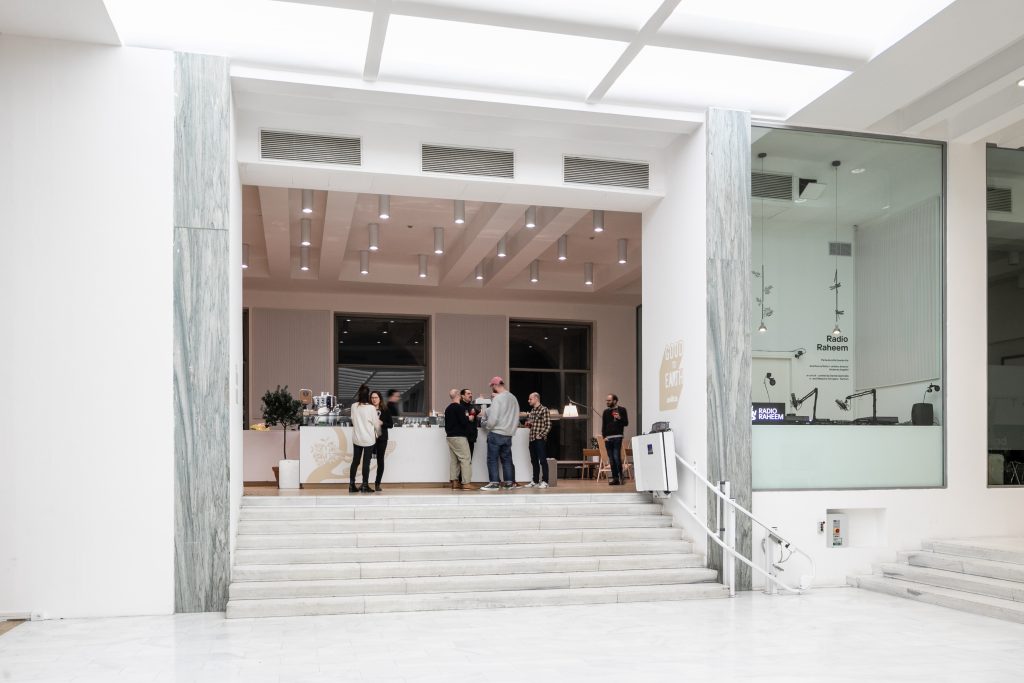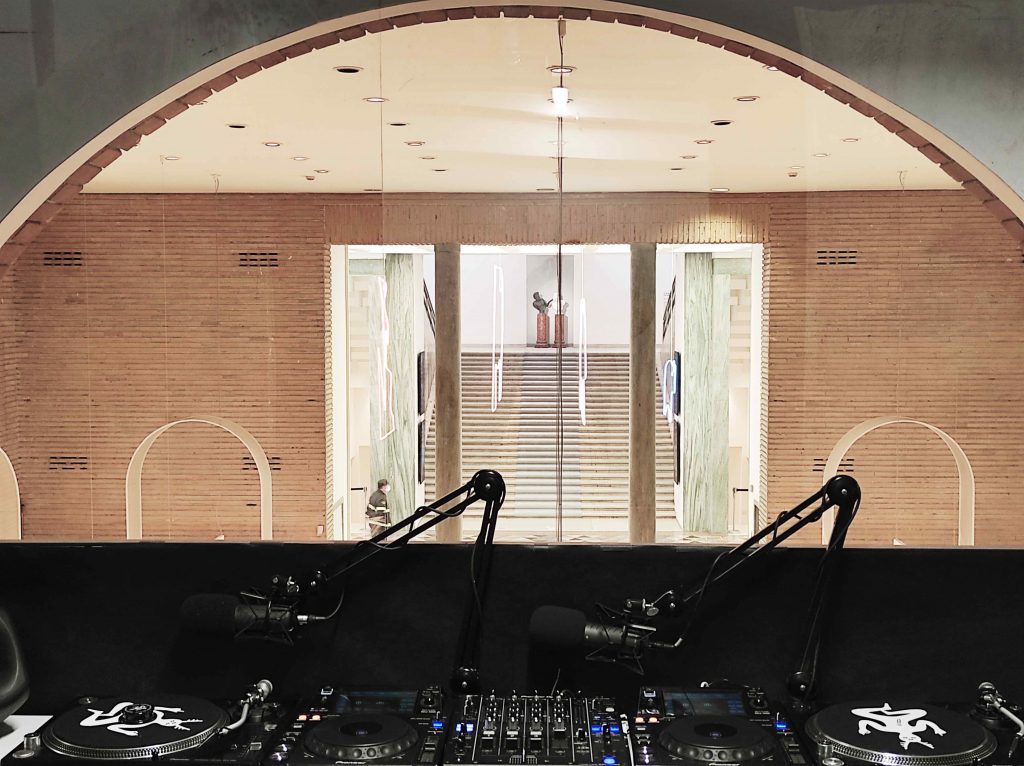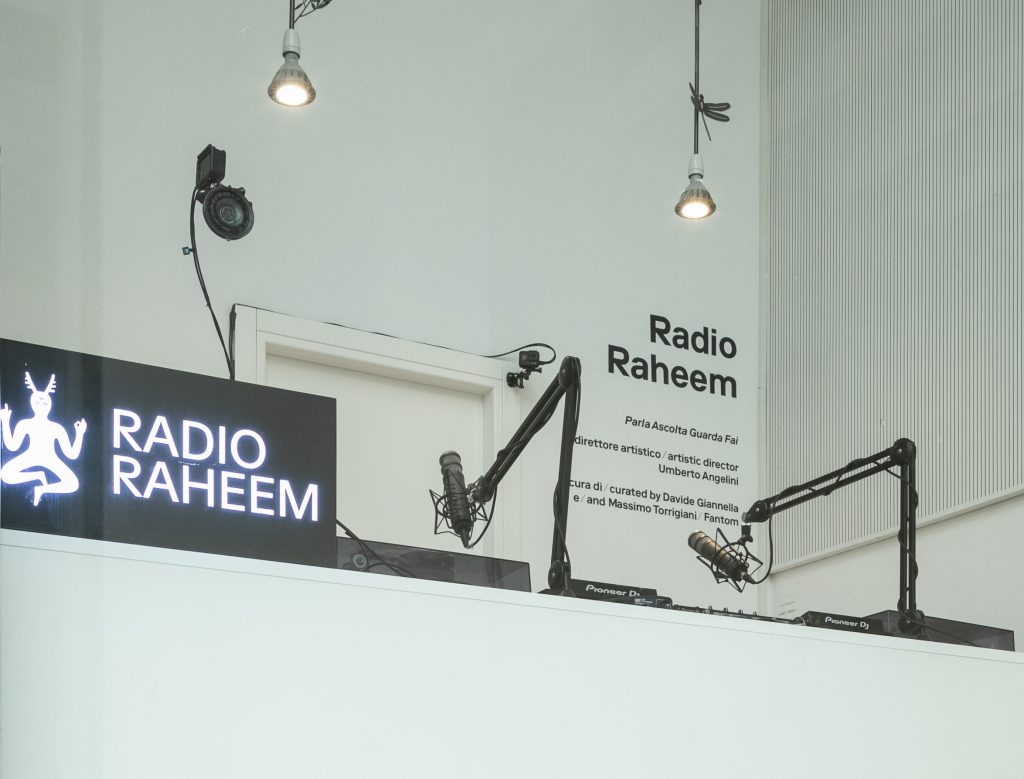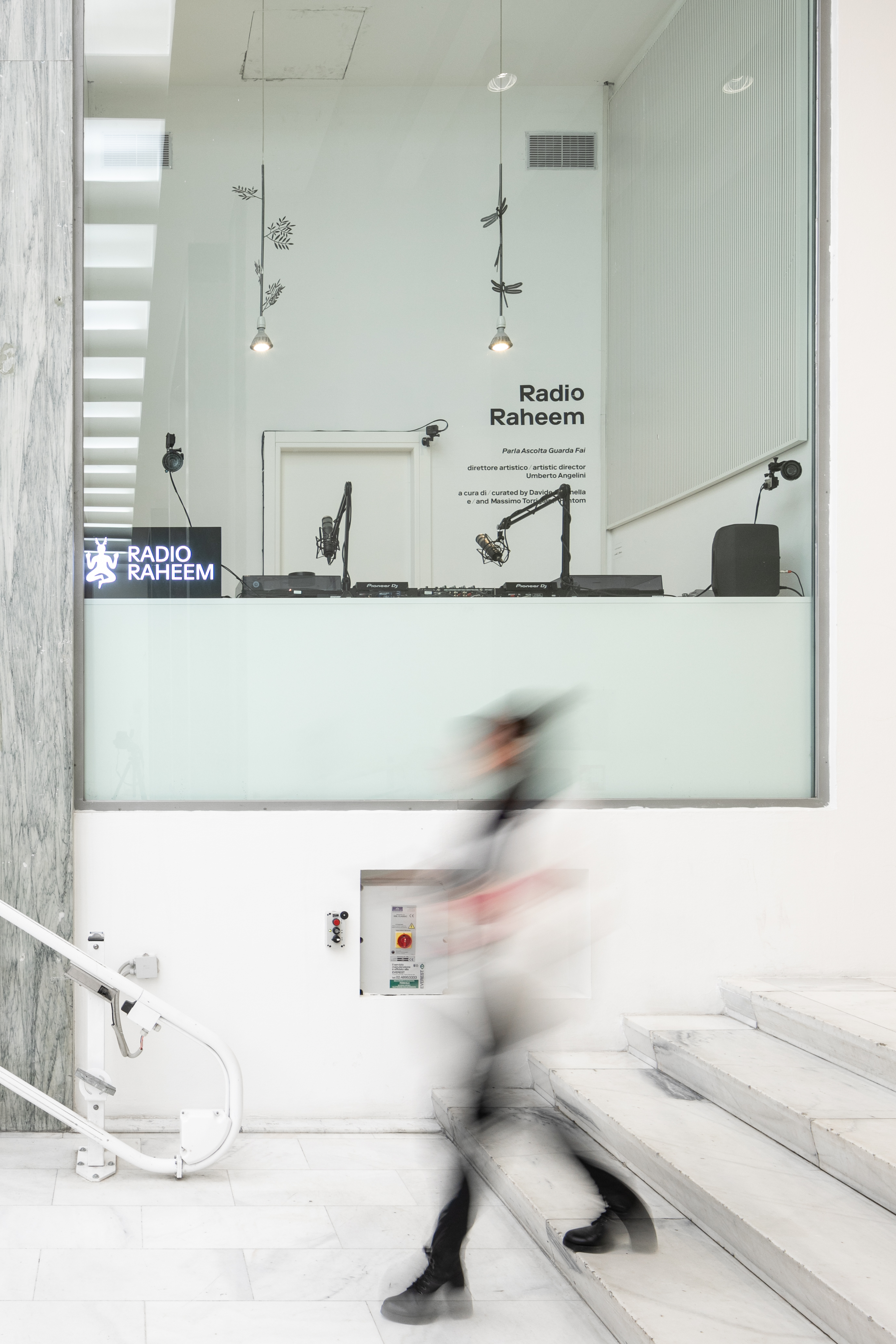RADIO RAHEEM
Generazione Critica: Radio Raheem is a radio with a very varied schedule that manages to deal with music but also with current news and art. How did you manage to build the structure of your radio? How is your team structured?
Radio Raheem: The secret is to have started immediately with a small team but very varied in terms of skills and cultural experiences united by curiosity as a guideline. The group has expanded but always keeping a careful eye to maintain different points of view since the radio itself welcomes very different instances and sensitivities. In addition to the internal team, a great deal of space is given to the proposals of our residents and collaborators: a large extended family that always helps us to remain open and ready to discover and evaluate new expressive ways. To define it in a nutshell, the radio has its own editorial line that is enriched by external contributions.
GC: Radio Raheem is born five years ago in Milan, broadcasting from the banks of the canal Naviglio and which has been based in the Triennale for two years. What has contributed to this change of place, which is certainly also a recognition of the activity? Did this move also affect the programming and editorial line?
RR: Raheem has always had a strong vocation for entering particular physical spaces that are able to maintain the right balance between being a digital platform but also a physical meeting place for the community of contributors and supporters. An open, transparent and human window, something that digital entities often fail to convey. The transition from Naviglio to the Triennale was a natural passage after the Triennale’s invitation to participate in a temporary residence which was then transformed into a permanent residence thanks to the great affinities with a similar institution, always very attentive to cultural innovations.
Surely the move has influenced: we created more space to talked programs with specific focus also considering the physical proximity with such an important hub, a crossroads of art and culture.

Radio Raheem © Triennale Milano, foto Gianluca Di Ioia
GC: Milan is a city that counts on various resources and artistic and creative communities in general, how do you position yourself within this city context and who are your privileged listeners?
RR: If I remember correctly, Emilio Tadini, an important figure in Milanese culture, said that when Milan suffers then the whole country soon suffers. This is to underline the peculiarity of a dynamic city that has always expressed a vocation for forerunner and connection with Europe due to its geographical, economic and cultural history.
With all its contradictions, Milan certainly remains the ideal place to think about a project like ours. The radio thus becomes the mirror of the urgencies of our local community, very connected with the outside world.
GC: Milan vs Berlin or London…, are there radio experiences with a strong cultural vocation and an attention to European visual arts that you look at carefully? Is it possible to imagine a network that strengthens individual identities and the sharing of content and experiences?
RR: Surely our business is very connected to the feeling of large urban cities and similar to many European and international realities such as Kiosk Radio (Belgium), Movement Radio (Athens), Radio Alahara (Paleatina), Radio8000 (Germany) Noods (Uk) just to name a few with which we have been able to actively collaborate over time. We are creating the network and specifically a project that we care a lot about and now funded by the European community called 25 A/V will start shortly and which brings together us Kiosk and Radio80000 as the first stone of an audiovisual project that will involve European artists.
GC: Over the years of activity you have built up a specific experience and have become a point of reference in Italy for both national and international contemporary musical trends. In your schedule, a lot of attention is also given to the dissemination of cultural scenarios collateral to music, an example of this is your ‘Supernova’ newsletter. With this weekly online column you spread in an almost anarchic way a series of meetings with artists of various kinds. For example you recently interviewed John Rafman or the writer Silvia Semenzin, but at the same time the column also hosts focuses on historical artists, such as Jimmy Hendrix. How do you choose the interlocutors for your interviews or insights?
RR: ‘Galaxy Expres’s was created with the intention of further expanding the vast thematic universe of Radio Raheem, offering our listeners a transversal angle where the priority is to stimulate curiosity with high-level content. Our interlocutors are always different, with some constant, which allows us to offer a variety of languages, thought and vision. Every month we host a column edited by the journalist Giulio Pecci on music arising from the African diaspora, or in the ‘Le Basi’ format we ask luminaries of the sector to vivisect the phenomenology of a musical genre with their own personal selection of records … there are prestigious signatures such as Simon Reynolds, Teho Teardo, Valerio Mattioli. We try to fish out of our usual world, to risk even sometimes and (lovingly) challenge our readership. Surely we are part of a network where there is no shortage of people or issues worthy of in-depth study or mention, but sometimes we let ourselves be dazzled by the siren song of unknown planets and at that point we start at immoderate speed with the intention of seeing them a little more closely to probe possible synergies, to open ourselves to storytelling. In September there are many new features – one year after its birth, the newsletter is constantly evolving and we are always happy to receive feedback!

GC: Analyzing your columns, you can see the interest in wanting to reconstruct a radio that is a place of culture. Just look at ‘Pasticciaccio Brutto’, inspired by the novel by Carlo Emilio Gadda, a historiographical program that takes up contemporary or past news events that, however, always remain on the verge of reality and fiction. Can you tell us about these types of interventions and how they fit into Radio Raheem’s programming?
RR: Pasticciaccio Brutto is a program born from the collaboration with Cristiano De Majo, Executive Director of ‘Rivista Studio’. Raheem has always wanted to dialogue with other worlds that were not necessarily of a musical nature. We are interested in vertical thinking and the idea around everything contemporary and cultural. The editorial line of this year’s new programs is a tangible example of this. We talk about music, comedy and current events to name a few.
GC: Looking at your programming highlights, how do you always try to maintain a balance between musical proposals and insights from various cultures? How do you manage these different areas and always keep yourself informed about the most current news?
RR: The work Raheem has been doing for five years now is to intercept, discover and collaborate with the most interesting and authentic voices around in order to produce original and interesting content. Over the years this has inevitably given rise to a beautiful “network of brains” that constantly exchange ideas.
GC: Do podcasts enter your programming? How do you relate to this editorial container?
RR: Podcasts are a very important “rib” of Raheem, a useful tool for expanding our audience and speaking to different audiences. They are not part of the live radio programming but can be listened to on our site and on all podcasting platforms.
GC: From web radio how do you experience the digital dimension of your reality? Are you nostalgic for FM radio?
RR: I don’t think we can talk about nostalgia, FM radio is just a way of transmitting on a technical level, what matters is the content: the power of music and words as mediums that remain unchanged. Today, more and more people connect their devices to cars or smart speakers in the same way a radio once turned on. So we strongly believe that in a short time the distance between the web and FM will be bridged. The fact remains that, as also for digital television, considering the large scale of offers, it is always present the influence of those who have the economic means to promote their channel in a sea of possibilities that can also be confusing. In any case, you can start from the bottom and make yourself known through an editorial specificity and a clear aesthetic and cultural vocation that can be a reference for a given community.
GC: Radio Raheem project is relatively young, what are your plans for the future? Where do you imagine yourself five years from now?
RR: Honestly, we live a lot in the present with the philosophy of yesterday’s best and tomorrow’s worst, in constant fine tuning. Certainly we see the future as the possibility of expanding our audience more and more while maintaining our specificity and the promise to remain as mentally open as possible, even making mistakes but trying not to crystallize the Radio on predictable patterns. Generational change is also a very important thing so we will always try to pass the baton and always keep the team open to new generations.
04/08/2022

Radio Raheem © Triennale Milano – foto Gianluca Di Ioia

